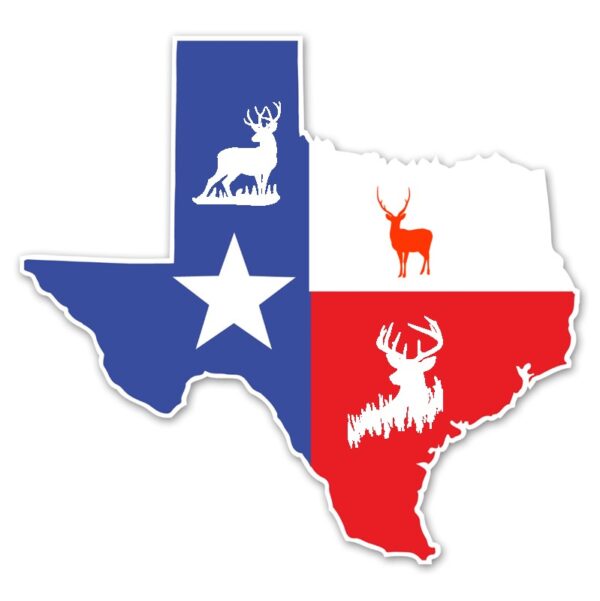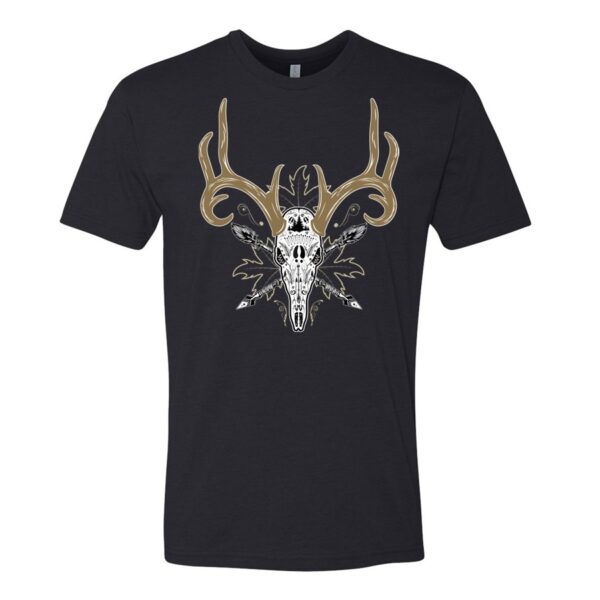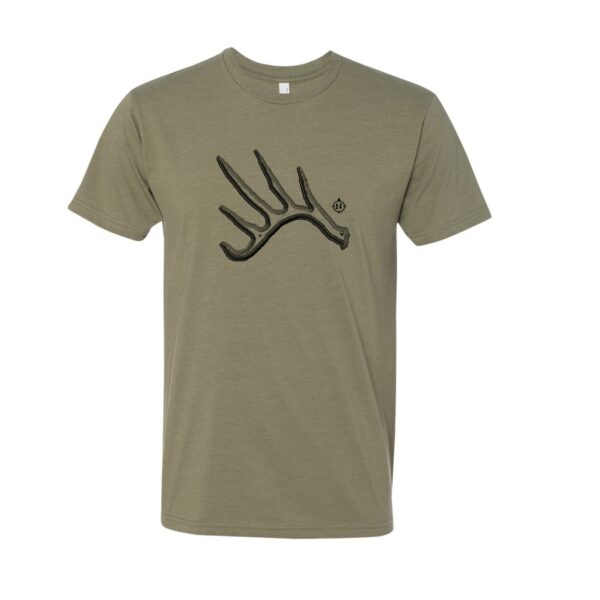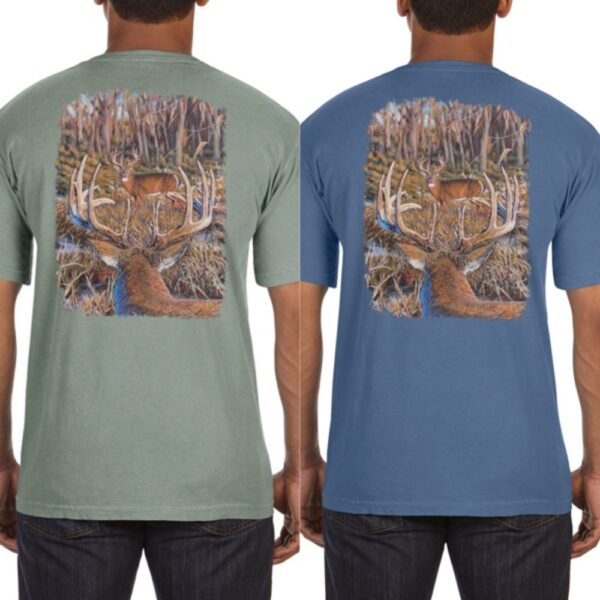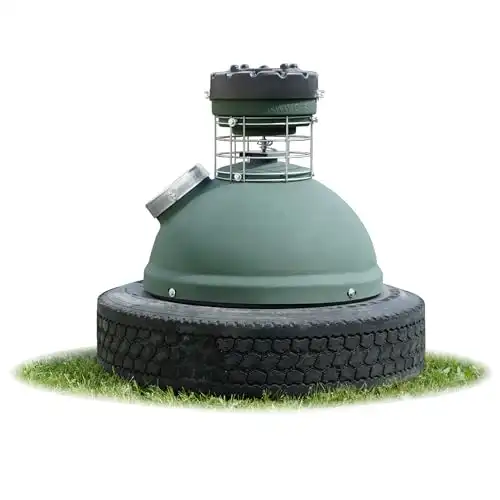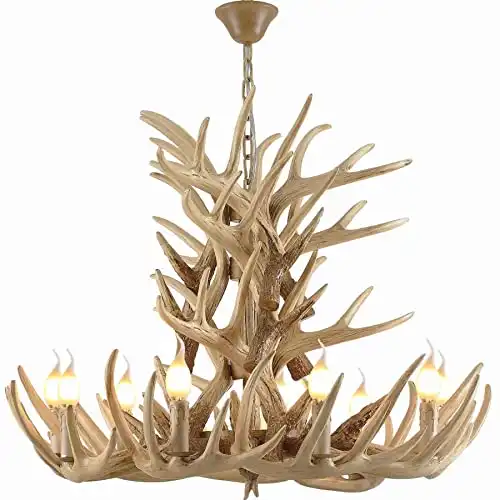The “Lone Star State” of Texas, is not only known for its vast landscapes and rich hunting traditions, but also for its diverse deer population. And, that’s good news for hunting enthusiasts and wildlife admirers alike.
Types Of Deer Found In Texas
From the iconic Whitetail deer to the elusive Sika, each species of deer in Texas offers a unique hunting experience and contributes to the state’s rich biodiversity.
Whitetail Deer (Odocoileus virginianus)
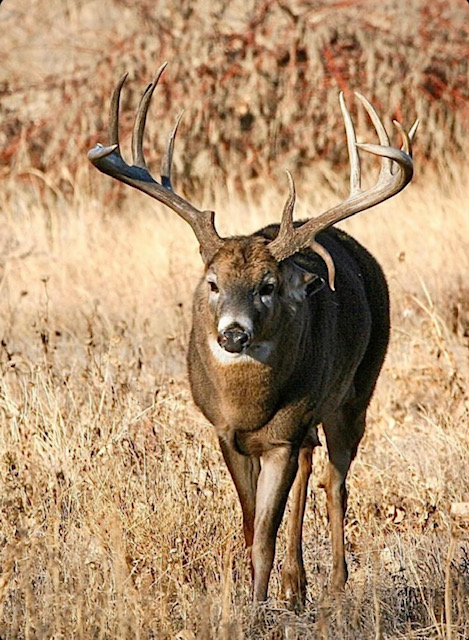
Whitetail deer reign supreme as the most common and beloved deer species in Texas. Recognizable by their iconic white tail and reddish-brown coat, these majestic creatures are a staple of the Texan wilderness and a prize for whitetail hunters.
- Description:
- Appearance: Whitetails boast a magnificent set of antlers, with bucks often showcasing impressive racks.
- Size and Weight: Adult males (bucks) can weigh up to 300 pounds, while females (does) are smaller.
- Habitat and Behavior:
- Habitat Range: Whitetails are adaptable to various environments, from dense forests to open grasslands and brushy areas.
- Feeding Habits: Whitetail feed primarily on leaves, twigs, fruits, and agricultural crops.
- Rutting Season: During mating season, bucks emit loud grunts and engage in other territorial behavior, like making rubs and scrapes.
- Significance in Texas:
- Most Sought-After Game: Whitetails are a prized game animal, attracting hunters from all over the country.
- Conservation Efforts: Texas boasts robust conservation programs to ensure the sustainability of Whitetail populations.
Mule Deer (Odocoileus hemionus)
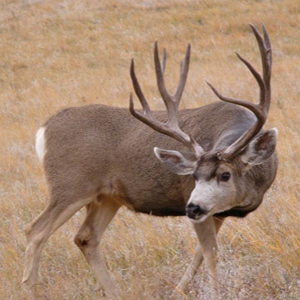
Venture into the western regions of Texas, and you’ll encounter the majestic Mule Deer, named for its oversized ears that are reminiscent of a mule.
- Description:
- Unique Features: mule deer possess distinctive antlers that shed and regrow annually.
- Coat: The mule deer have a grayish-brown coat provides excellent camouflage in their preferred habitats.
- Habitat and Behavior:
- Habitat Preference: mule deer thrive in open landscapes such as mountainous regions and desert scrublands.
- Migration Patterns: During the winter months, mule deer often migrate to lower elevations in search of food.
- Social Behavior: mule deer are known to form small groups, especially during mating season.
- Significance in Texas:
- Trans-Pecos and Panhandle Regions: These areas are hotspots for mule deer sightings.
- Challenging Hunts: Hunters are drawn to the rugged terrain and elusive nature of mule deer.
Axis or Chital Deer (Cervus axis)
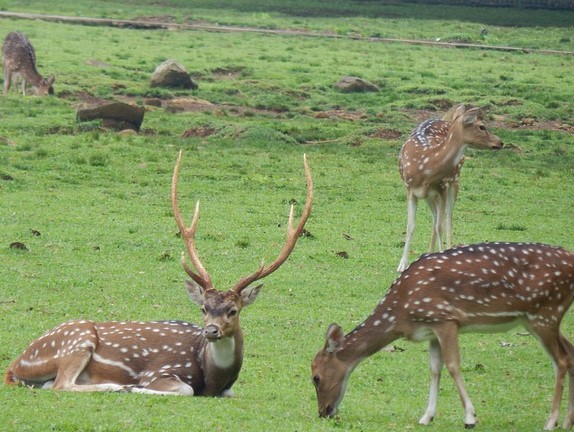
Though not native to Texas, the Axis Deer has found a thriving home in the picturesque Hill Country and South Texas regions.
- Description:
- Stunning Coat: Axis Deer sport a reddish coat adorned with white spots, reminiscent of a fawn’s appearance.
- Size: They are slightly smaller than Whitetails and Mule Deer.
- Habitat and Behavior:
- Habitat Range: Axis Deer are often found in mixed woodlands, grasslands, and brushy areas.
- Social Herds: These deer typically gather in herds, grazing on grasses and foliage.
- Mating Displays: During the rutting season, bucks engage in competitive displays to win mates.
- Significance in Texas:
- Exotic Beauty: Axis Deer are highly sought after for their striking appearance and beautiful hides.
- Culinary Delights: Their venison is known for its tender texture and delicious flavor.
IV. Sika Deer (Cervus nippon)
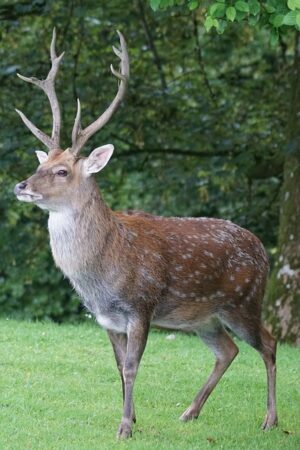
For a unique hunting challenge, head to the marshy and swampy areas along the Gulf Coast to track down the elusive Sika Deer.
- Description:
- Distinct Appearance: Sika Deer are a smaller deer with a coat that is adorned with spots.
- Behavior: They are known for their stealthy and elusive nature, making them challenging to hunt.
- Habitat and Behavior:
- Coastal Habitats: Sika Deer thrive in marshes, swamps, and coastal grasslands.
- Mating Rituals: Bucks emit vocalizations during the rut, marking their territory and seeking mates.
- Significance in Texas:
- Hunting Adventures: Sika Deer hunting offers a unique experience in the coastal wilderness.
- Conservation Focus: According to Texas Tech Natural Sciences Research Laboratory, sika deer as a species of least concern and increasing in number. However, there is a need to assess how sika deer interact with other Texas wildlife to determining if conservation actions should be necessary in the future.
Blacktail Deer (Odocoileus hemionus columbianus)
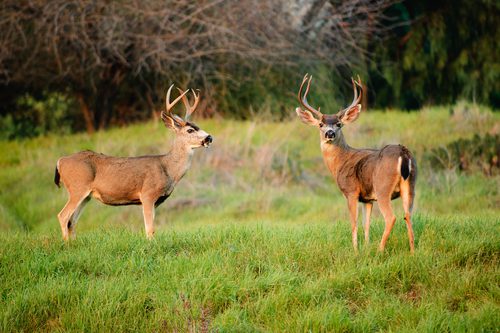
While less common than other species, Blacktail Deer can be found in the rugged mountainous regions of West Texas.
- Description:
- Features: Blacktail Deer share similarities with Mule Deer, including their antler structure.
- Tails: Their dark tails distinguish them from other deer species.
- Habitat and Behavior:
- Mountain Dwellers: Blacktail Deer are well-adapted to the challenging terrain of West Texas.
- Feeding Habits: They graze on grasses, leaves, and shrubs found in their mountainous habitats.
- Significance in Texas:
- Lesser-Known Species: Blacktail Deer offer a unique hunting challenge for those exploring West Texas.
- Conservation Concerns: Preservation of the Blacktail deer’s mountain habitats is crucial to its survival.
Texas Deer Hunting and Regulations
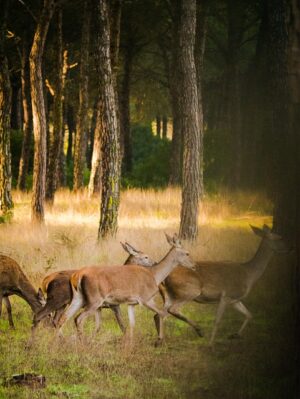
Texas offers a range of hunting seasons and regulations to ensure sustainable deer populations and enjoyable hunting experiences.
- Hunting Seasons:
- Whitetail, Mule, Axis, Sika, and Blacktail Deer each have specific hunting seasons.
- Check Texas Parks and Wildlife Department for updated regulations.
- Tips for Hunters:
- Strategies for Tracking: Use game cameras as well as spend time scouting the areas you plan to hunt. Be sure to study deer behavior of the various species found in Texas that you plan to hunt.
- Gear Recommendations: Quality rifles, bows, camouflage gear, and scent control products.
- Notable Conservation Organizations:
Final Thoughts On Types Of Deer In Texas
In the heart of Texas, a world of deer species awaits hunters and nature enthusiasts alike. From the iconic Whitetail Deer to the exotic Axis and elusive Sika, each species offers a unique glimpse into the diverse wildlife of the Lone Star State.
And now that you know the types of deer in Texas, should you have the opportunity to hunt or observe these deer in their Lone Star State habitat, be sure to tread lightly, respect nature, and embrace the thrill of the hunt.

